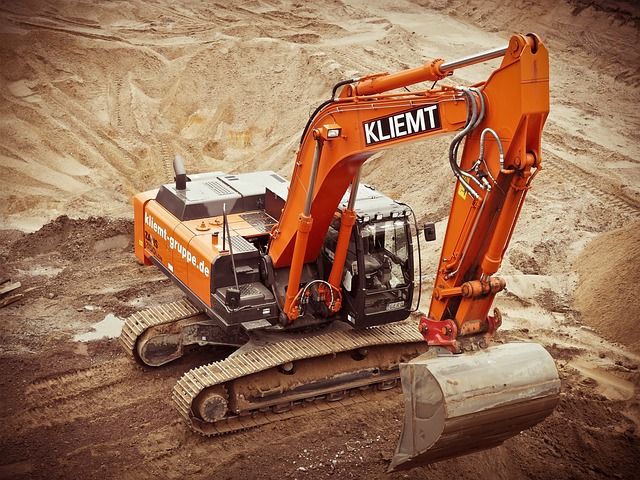Utility potholing services use advanced techniques like vacuum and hydro excavation to safely and accurately expose underground utilities. These non-destructive methods replace traditional hand digging, reducing damage risks, delays, and financial losses. Modern potholing has revolutionized construction by enhancing efficiency, worker safety, and project timelines while minimizing disruption to critical infrastructure. Future trends include increased digitalization and automation for even greater precision and safety in subsurface utility potholing.
In the fast-paced world of construction, ensuring safety and avoiding damage to critical underground utilities is paramount. This is where utility potholing services come into play, offering a solution that balances efficiency with precision. From vacuum excavation potholing to hydro excavation, modern techniques have evolved significantly from traditional methods, enhancing safety and reducing risks associated with utility line exposure. This article explores the importance of professional utility potholing, its benefits, and future trends in precise utility location for seamless construction projects.
Understanding Utility Potholing: The Foundation of Safe Construction
Utility potholing is a critical process that forms the foundation for safe and efficient construction projects. It involves the non-destructive exposure of underground utility lines, enabling precise identification and mapping of these essential services. This method, often referred to as vacuum excavation potholing or hydro excavation potholing, offers a safer alternative to traditional hand digging, which can be time-consuming and pose significant risks.
Professional utility potholing services utilize advanced equipment to create a small, controlled hole in the ground, exposing buried utilities like gas pipelines, electrical cables, water mains, and fiber optic lines. This meticulous process ensures that construction teams have accurate, up-to-date information about the location of these critical infrastructure assets, minimizing the risk of damage or disruption during excavation. By employing these services, construction projects can be completed with enhanced safety, reduced delays, and minimized financial losses associated with accidental utility strikes.
The Evolution of Potholing Techniques: From Traditional to Modern Methods
The evolution of potholing techniques has come a long way from traditional methods to modern innovations, revolutionizing how construction projects approach utility line exposure. Traditional potholing involved mechanical excavation, which was time-consuming and often led to damage to underground utilities. This manual process was not only labor-intensive but also presented significant safety risks for workers due to the potential for striking hidden lines.
Modern utility potholing services, such as vacuum excavation potholing and hydro excavation potholing, have transformed the industry. These non-destructive potholing methods use advanced technology to precisely expose and locate subsurface utilities. Vacuum excavation employs a powerful vacuum to remove soil without damaging pipes or cables, while hydro excavation uses high-pressure water to loosen soil, ensuring safe utility line exposure. Such innovative techniques not only streamline construction projects but also enhance safety, reducing the risk of accidental damage and interruptions to critical infrastructure services.
Benefits of Professional Utility Potholing Services for Construction Projects
In today’s digital era, construction projects face a unique challenge—ensuring safe and accurate utility line exposure. This is where professional utility potholing services step in as game-changers. By employing advanced techniques like vacuum excavation potholing and hydro excavation potholing, these services offer precise utility location, reducing the risk of damaging critical underground infrastructure.
Unlike traditional methods, non-destructive potholing approaches allow for accurate mapping of subsurface utilities before excavation. This precision is crucial for navigating complex urban landscapes and labyrinthine utility networks. By leveraging professional utility potholing, construction projects can achieve significant benefits, including faster turnaround times, reduced costs associated with utility line strikes, and enhanced safety for workers and the public—all while ensuring that essential services remain undisturbed.
Best Practices and Future Trends in Precise Utility Location and Potholing
In the realm of construction, ensuring safe and accurate utility line exposure is paramount. Best practices in precise utility location and utility potholing services involve advanced techniques such as vacuum excavation potholing and hydro excavation potholing. These non-destructive methods allow for the identification and mapping of underground utilities before excavation, minimizing damage risks and enhancing safety. By employing these professional potholing services, construction projects can navigate complex subsurface landscapes with confidence.
Looking ahead, future trends in utility location and potholing suggest further digitalization and automation. Advanced technologies like GPS-guided equipment, real-time data analytics, and remote sensing are poised to revolutionize the industry. These innovations aim to improve precision, efficiency, and safety even further, setting new standards for safe potholing services. As construction projects become more intricate, adopting these cutting-edge practices will be crucial in managing subsurface utility potholing tasks effectively.
In conclusion, adopting verified utility locations through advanced techniques like vacuum excavation and hydro excavation potholing is essential for modern construction projects. These professional utility potholing services ensure safe digging, minimize damage to underground utilities, and streamline project timelines. By following best practices and embracing future trends in precise utility location, the construction industry can achieve efficient, non-destructive potholing, fostering a safer and more sustainable built environment.
